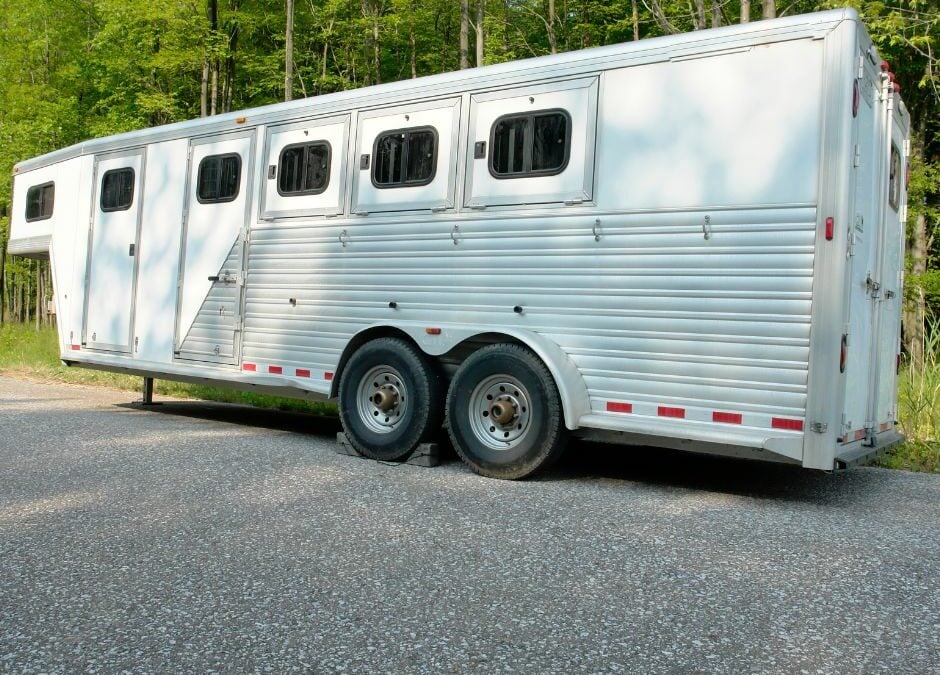Safe trailer hauling is about more than just getting from point A to B. It’s a commitment to your horses’ safety. One crucial aspect of this commitment is the inspection of your trailer’s lighting and hitch. In this blog, we’ll explore the steps for inspecting both to ensure a safe and smooth journey. Before hitting the road, conduct a comprehensive pre-hauling inspection to ensure safety.
Tire and Wheel Check: Verify tire pressure, tread wear, and wheel condition.
- Tire Pressure: Check the tire pressure with a reliable gauge. Ensure that it matches the recommended pressure specified in your trailer’s manual or on the tire sidewall. Proper inflation is vital for stable towing.
- Tire Tread: Examine the tire tread for signs of wear and tear. If you notice the tread depth is less than recommended or there are cuts, bulges, or uneven wear, replace the tires promptly. Worn-out tires can lead to instability on the road.
Brakes and Suspension Inspection: Test brakes, and check suspension for wear or damage.
- Brake Operation: Test the brakes to ensure they engage and release smoothly. If you notice any issues like a delay in braking response or uneven braking, it’s a sign that your brakes need attention.
- Brake Maintenance: Regularly maintain the braking system. Check for any signs of wear, corrosion, or contamination. Replace brake pads or drums as necessary. A well-maintained braking system is your best insurance against accidents.
Lights and Electrical Systems: Inspect lights, wiring, and connectors for proper function.
- Taillights: Verify that your trailer’s taillights illuminate when you turn on your vehicle’s headlights. These lights make your trailer visible from behind.
- Brake Lights: Test the brake lights to ensure they brighten when you apply the brakes. Functional brake lights signal your intention to slow down or stop drivers following you.
Hitch and Coupling Mechanism: Examine the hitch, coupler, safety chains, and ensure the trailer is level.
- Hitch Mechanism: Examine the hitch and coupling mechanism to make sure they are in good condition and properly secured. Ensure that the safety pin is securely in place.
- Level Connection: Make certain that the trailer is level when connected to the tow vehicle. Properly aligning the trailer ensures that weight is distributed evenly and reduces the risk of instability during towing.
our journey with horses in tow is a serious responsibility, and safety is paramount. By inspecting your trailer’s lighting and hitch, you’ve taken proactive steps to ensure a secure trip for everyone involved.
Regular checks are the foundation of safe and responsible trailer hauling, contributing to the well-being of your horses and road safety for all. Travel with confidence, knowing you’ve prioritized safety above all else.

